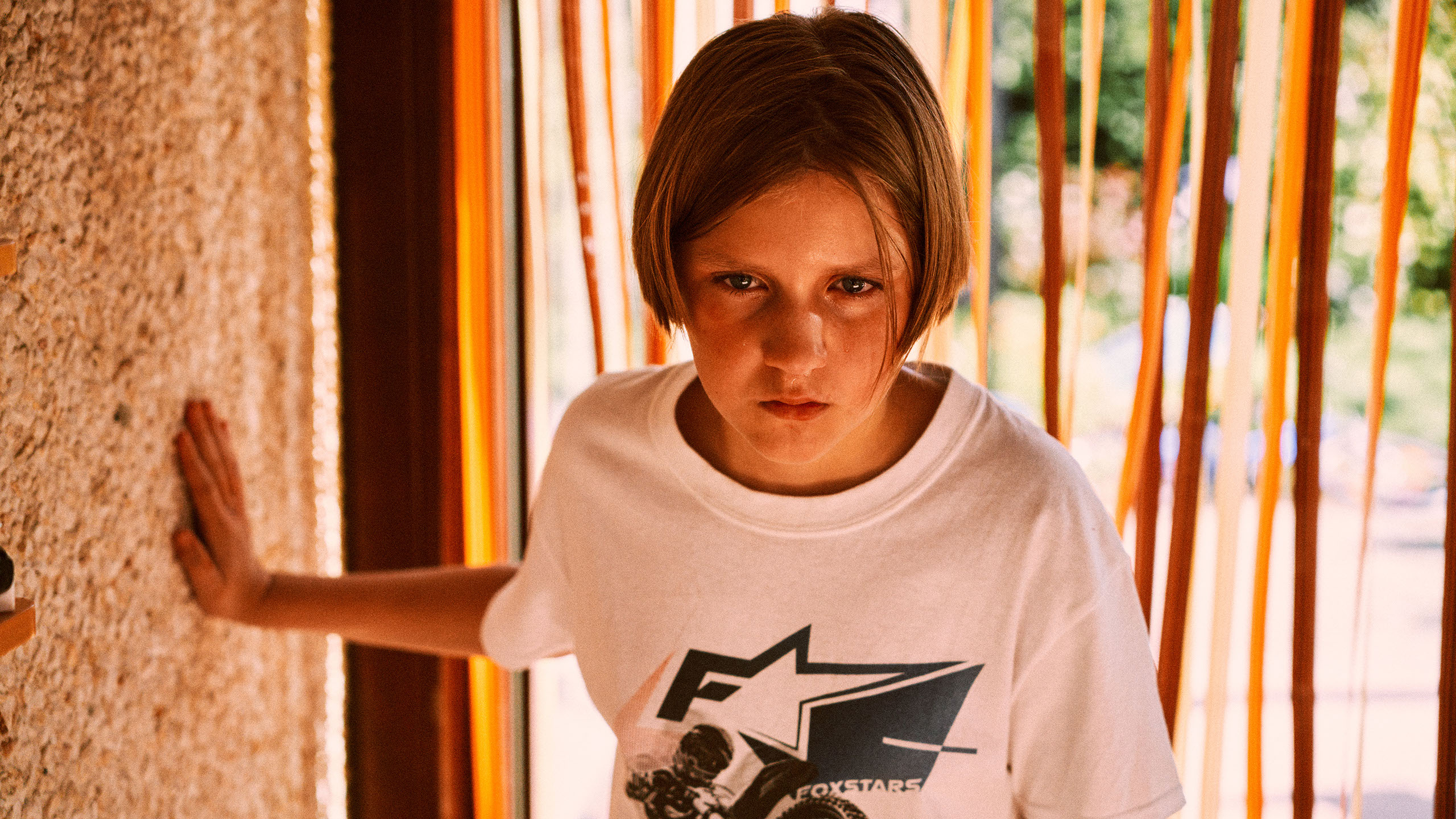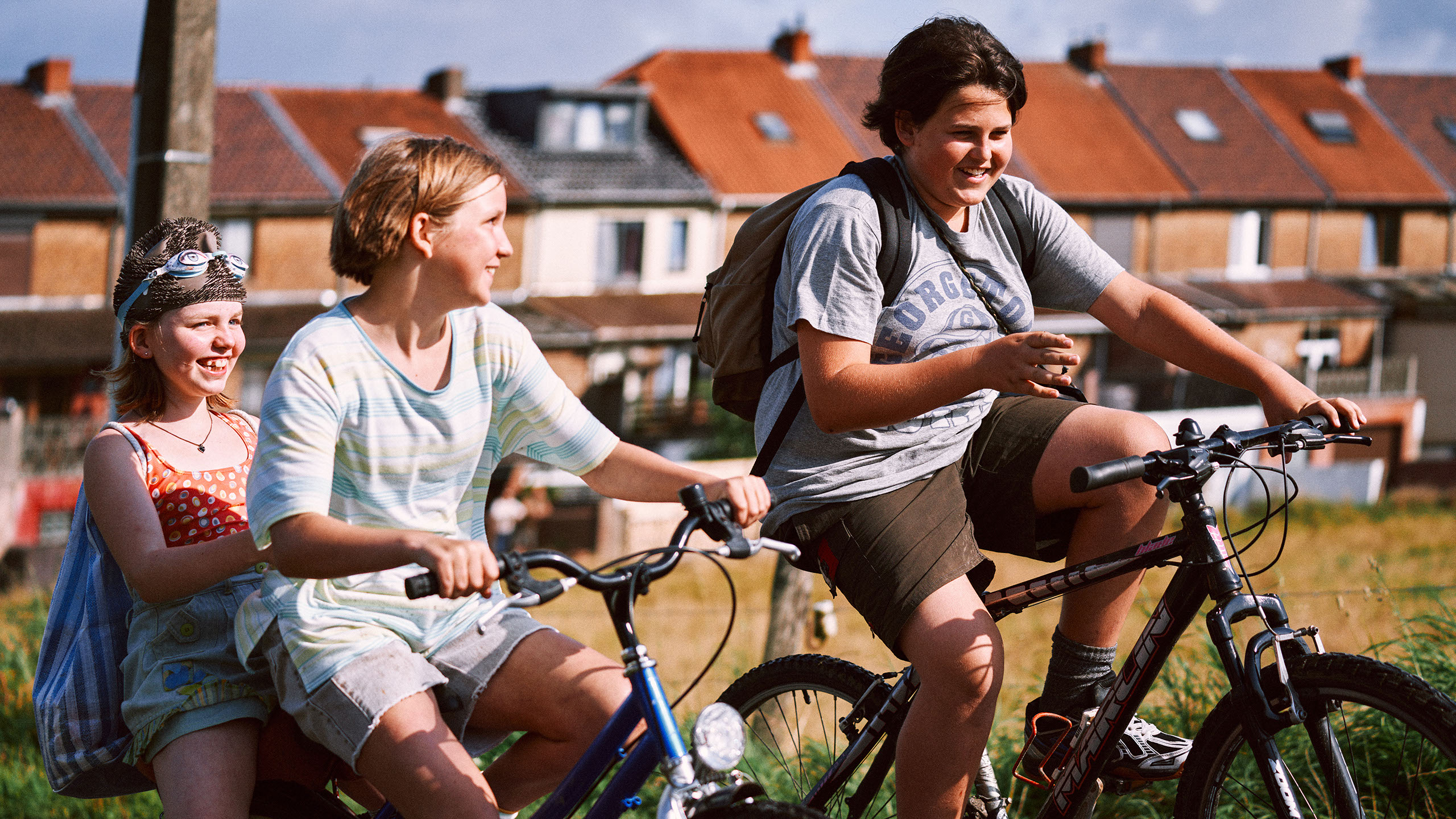interview
Veerle Baetens Interview – Director of ‘When It Melts’
After spending over 20 years as an actress across both film and television, Veerle Baetens—who most notably starred in Felix van Groeningen’s The Broken Circle Breakdown—has stepped behind the camera and made her feature film debut as a writer-director with When It Melts. An unflinchingly brutal adaptation of Lize Spit’s best-selling 2015 novel The Melting, it weaves in and out of the past and present as it tracks the life of a vulnerable young woman named Eva (played by Charlotte De Bruyne as an adult, and Rosa Marchant as a teen). As she reflects on traumatic experiences from her childhood, which include negligent parents and a pair of slightly older boys who pull her into an increasingly twisted riddle game, Eva makes the decision to return to the village where she grew up in order to face those who harmed her.
Over Zoom from her home in Belgium in the days ahead of When It Melts’ premiere at the 2023 Sundance Film Festival, Baetens spoke with me about translating the book to the screen and the obstacles in crafting an empathetic central character.

Projektor: You’ve been an actor for around two decades and have experience directing in theater. How long had you had the desire to write and direct films?
Veerle Baetens: When I had to choose for my education after high school, I went to the RITCS [Royal Institute for Theatre, Cinema & Sound], which is a directing school in Brussels, just to check what it was because I was interested in it. At the same time, I did the entry exam for a conservatory in Belgium, [which is] like a theater school, and I got in. I did the exam because I love dancing and I loved singing, but I didn’t really know what acting was about so I fell more in love with acting. That’s where I started to focus, and with acting comes story and storytelling. I think from that, because I already had the feeling I wanted to make things, came the experience and the real urge to start directing.
When did you first come across Lize Spit’s novel The Melting? And what was it about the material that made you want to adapt it as your first feature?
In 2016, I was shooting a series that I had co-written. That was [the] first time I got in touch with storytelling, as a writer. [The Melting] came to me as a present from a producer with whom I had worked many times, also on The Broken Circle Breakdown. It was like a gift, and he said, “Do you want to direct this?” It wasn’t an offer or a question, it was an assignment. I started reading and I only wanted to do it if I [connected] to the material. It had all the elements necessary to tell a story that I support. It had the suspense element that I found [was] needed to tell a story like that [and] to keep the audience [stuck] to their seat.
I connected with the young Eva because I’m sensitive to how people look at me and how I want to please them; I’m a pleaser. [Laughs.] I was very sensitive to how she did everything to be validated by these people around her. I felt fascinated by the adult Eva because she, in a way, is completely different. She has shut down somehow, and I am not like that. But I see people around me and always [wonder] how this mechanism of silencing yourself works. I wanted to examine and go deeper into that to understand it more and create empathy for the people around [them]. It helped; I really got close and understood this pushing away of things that are too painful to let emerge at a certain moment in life. I was very touched by this devastating loneliness of this character not being able to do anything to solve it.
What kind of conversations did you have with the lead actors, Charlotte De Bruyne and Rosa Marchant, about Eva’s emotional journey?
We first shot the past [scenes] and I first cast the little Eva because I thought it was very important to first have a child that can act. With her, what you talk about is not so psychological because it is more “Who are you, Rosa?” and “How can I draw you to the character?” instead of “How can you drag the character into you?”—because she’s not a professional actress. I tried to adapt the character as much as possible [according] to her, but we also played a lot with how she looks.
Two weeks before we started shooting, she still had long hair and someone said to me, “She’s not a four out of 10; she’s too beautiful.” It was a man, of course, making that comment. I thought, “Okay, how do boys look at girls?” It’s all about long hair and having [breasts], so I thought, we have to cut the hair. The clothing is also more boyish. What we really talked about very well was her emotional line of where she is in the story in the beginning and [Eva’s] moral compass, so I really went step through step in every scene. With Charlotte, she was completely inspired by little Rosa. Charlotte got everything that was shot with Rosa, so she could start looking at her and physically morph into this adult version of little Eva.
I wanted people to want to save her, while at the same time feel powerless because she’s just on screen. It’s the same feeling I think Eva has towards herself; she cannot save herself either.
Eva is a very vulnerable young woman who always wanted to fit in and be seen as a child, but then she was forced to internalize all of this pain that she experienced at the hands of both her family and friends that she carried into adulthood. Was it your goal to develop a character whose experiences and feelings can be universally understood by the audience?
The most difficult part of making it into a movie was that the book was a complete internal monologue. [Eva] was very passive in the present, and she undertakes almost nothing. [It’s] impossible to make a film with a character like that, because you would have a character who is looking at everything and not doing anything, but you cannot read someone’s eyes. You really need to put it into action.
In the beginning you have a frozen character who shows nothing, or maybe something you don’t want to see. I wanted the public to slowly but surely become attached to adult Eva, [since] it’s very easy to become attached to little Eva because she’s this child, and she’s vulnerable and innocent. It’s okay that she throws away her values, but you forgive her. This adult Eva is somewhat awkward, and you don’t get her. Behind every adult is a child, and I wanted to [show] that.
There’s a beautiful song by Jacques Brel called “Fernand,” and in it he says, “I want to invent a family for you, even if it’s just for your funeral,” and it’s a bit like that. I wanted people to become her friend so that in real life, when you meet someone you wouldn’t connect [with], now you will because you will know what is behind [them]. I wanted people to want to save her, while at the same time feel powerless because she’s [just] on screen. It’s the same feeling I think Eva has towards herself; she cannot save herself either.

The film weaves in and out of her past and present as Eva reflects on these moments from her childhood. How did you make sure that those threads were balanced?
That was a very difficult task because, in the writing, it was a long process to find this equilibrium. We really reconstructed what was written because in writing it worked, but not in the edit. In the edit, we felt like you wanted to stay longer with the young Eva, and when you come to the adult Eva, you didn’t want to stay longer with her. For a long time, it was very difficult to find the key to wanting to [spend a] long time with adult Eva, because you always wanted to go to the past because it’s more jolly. It was a search for, as you say, balance. It was very much [about] playing with both tensions: you feel something is happening in the past and you feel that you want [adult Eva] to get on the road as fast as possible.
How did you decide how far to go in terms of depicting the riddle game that the children play and the assault that Eva experiences?
It had to go far because if you have trauma like that, and you decide to do what she does at the end, then it needs to be tough. It gradually grows, because in the beginning it’s even funny; you feel she’s okay with it. [With] the boys, I’m not saying it’s good but it’s something that happens and it’s not intentionally bad. It begins in a very innocent way, then something happens which completely goes wrong; it had to be tough.
But I am a mother myself of a girl the same age, so I’m very sensitive to that. We did everything in our power to keep it safe for them. There was a psychologist there when they shot everything. Before they shot that [assault] scene, [there] was a long period of rehearsal and getting to know and being confident with each other that comes before filming, so they were really friends at that moment. It was very important to me that making movies about trauma doesn’t become [traumatic] for a child actor. I think they really grew together in a very beautiful way, not because of that scene but because of them being together and being friends.
Curated by humans, not algorithms.
© 2025 A Good Movie to Watch. Altona Studio, LLC, all rights reserved.